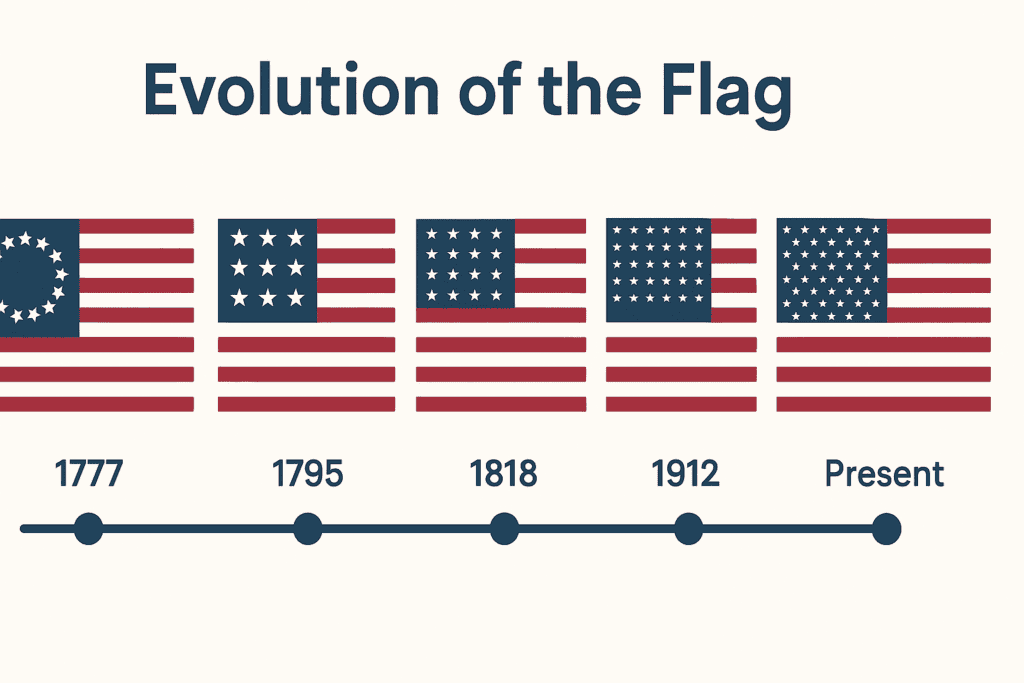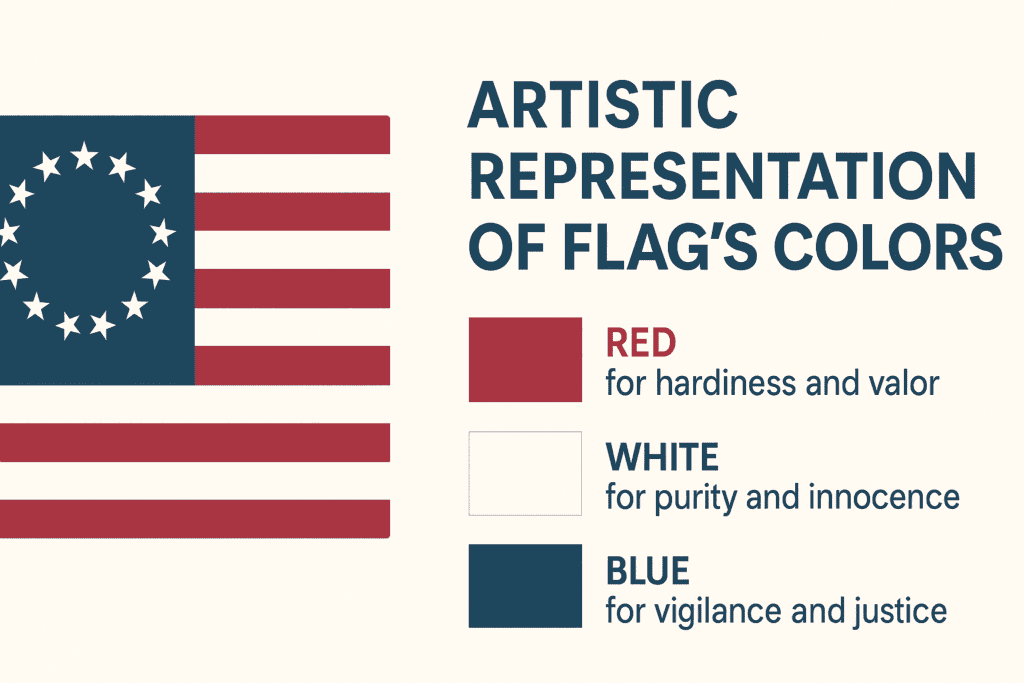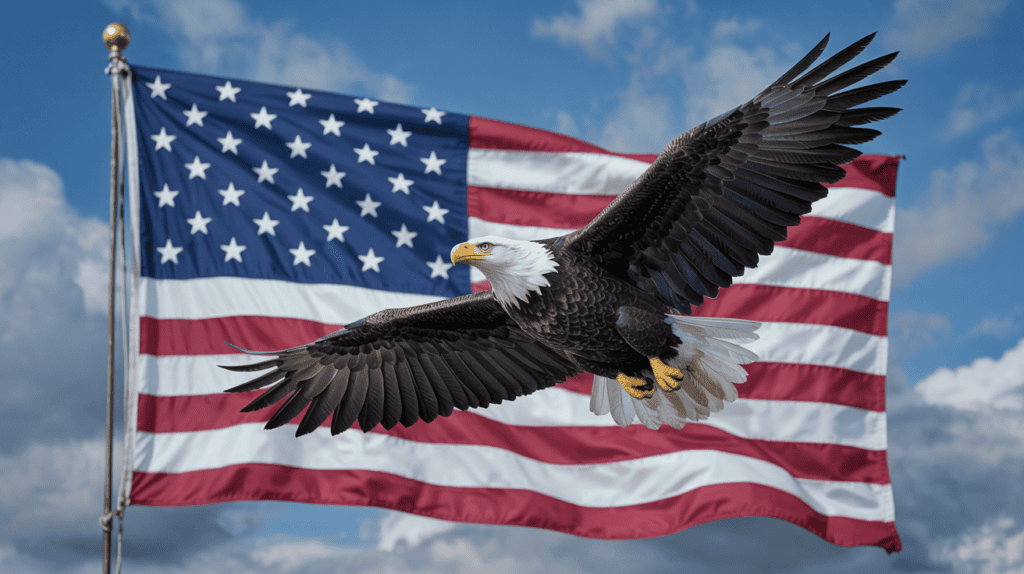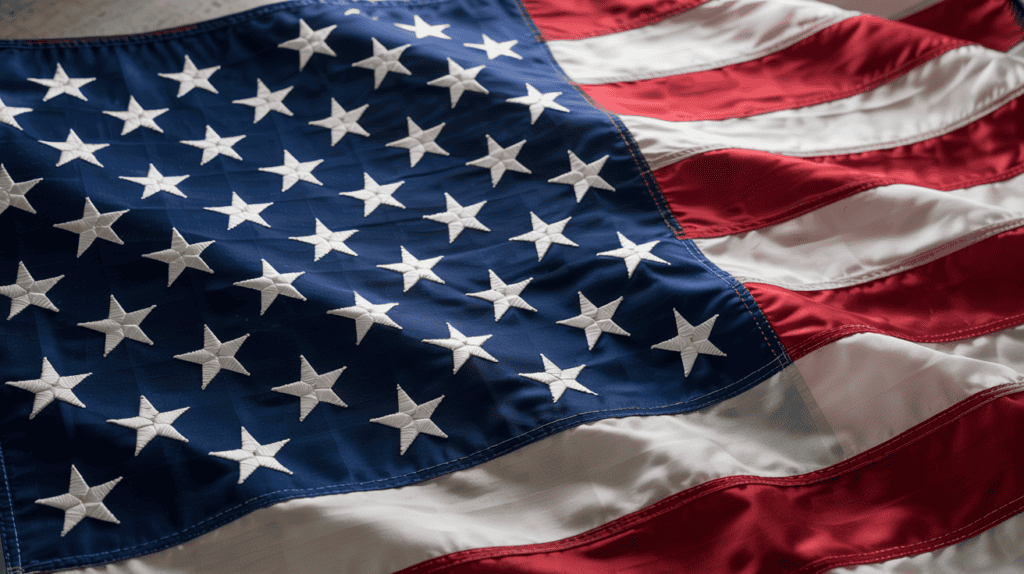The US flag, commonly known as the Stars and Stripes, is a powerful symbol of freedom and unity. For centuries, it has inspired generations of Americans and people from around the world. While many are familiar with its basic design of stars and stripes, there are numerous fascinating details about its history and significance.
Some might wonder why the flag looks the way it does or how it came to be. Learning about the intriguing facts surrounding the American flag can deepen our appreciation and understanding of its importance.
So let’s dive in and explore some of these lesser-known truths that contribute to the rich legacy of this national treasure.
1) The U.S. flag has 50 stars for each state.
The U.S. flag is known for its bold design with stars and stripes. Each of the 50 stars on the flag represents a state in the United States.
The addition of stars has a historical background. When states joined the union, a new star was added to the flag. The idea was to reflect the growing nation.
Today, the flag proudly displays all 50 stars. These stars sit in the blue field, highlighting each state’s unique contribution to the country. The tradition of updating the flag’s stars dates back to decisions like the Act of April 4, 1818, ensuring the flag always represented the number of states in the union.
2) The 13 stripes stand for the original colonies.
The United States flag’s design is packed with history. The 13 stripes are not just for decoration. They stand for the 13 original colonies that gained independence from British rule. These colonies were the first to come together and form what is now the United States.
The stripes alternate red and white, creating a striking pattern. Each color has its own meaning, too. Red symbolizes valor and bravery, while white represents purity and innocence. This mix tells a story of the nation’s beginnings and ideals.
The arrangement of these stripes has gone unchanged since the flag was first crafted. While the number of stars on the flag has increased to 50, the 13 stripes remain constant. This highlights the lasting impact of the original colonies on the country’s identity.
This tradition is still celebrated today, reminding people of the courage and endurance of those early settlers. The flag is a symbol of their journey and the foundation they set for the nation. For more information, visit the explanation on 13 stripes and the original colonies.

3) First adopted on June 14, 1777
The American flag, often called the Stars and Stripes, was first adopted on June 14, 1777. This date is now celebrated as Flag Day in the United States. Back then, the Second Continental Congress made this important decision during the American Revolution.
The flag was designed to have thirteen stripes, alternating red and white, representing the original thirteen colonies. It also featured thirteen stars, symbolizing a new constellation in the union of these states. The choice of stars and stripes was carefully thought out to reflect unity and independence.
This resolution marked the first official appearance of the American flag. Over time, its design has changed as new states joined the union. Despite these changes, the flag’s core symbolism of freedom and unity remains strong. Today, the flag is a powerful national symbol and a reminder of the country’s history and growth.
This adoption in 1777 was a significant step in establishing a national identity during a critical time in American history.
4) The flag was redesigned over 25 times.
The United States flag has a rich history marked by numerous redesigns. Since its debut in 1777 with 13 stars and stripes, the flag has changed as new states joined the Union. Each new entry meant adding a star, leading to over 25 redesigns.
The most significant redesigns came after major periods of expansion. For instance, the flag was altered in 1818 to return to its original 13 stripes while increasing the number of stars to match the number of states. This kept the look of the 13 original colonies, while still adding stars for each new state.
Over the years, the stars were rearranged into various patterns. The current 50-star version, adopted in 1960 following Hawaii’s statehood, has remained unchanged since. This makes it the longest-running version in the flag’s history.
Each redesign reflects the growth and change of the country. The flag not only symbolizes American history but also its evolving identity. It’s interesting how a piece of cloth can represent such a timeline of growth and progress. With every change, the flag continued to embody the nation’s unity and expansion.
5) Red symbolizes hardiness and valor.
The red in the American flag holds significant meaning. It stands for hardiness and valor. These qualities represent strength and courage, showing the bravery needed to stand tough in difficult times.
Red also reflects boldness. Throughout history, people have shown immense bravery and resilience. These traits are celebrated in the color red on the flag.
This powerful symbolism reminds people of the sacrifices made for freedom. It represents the courage of those who fight for their country and face challenges with determination. The color red continues to inspire and unite the nation under a common spirit.
6) White represents purity and innocence.
White on the American flag symbolizes purity and innocence. This choice of color reflects values that were important to the founders. It suggests a sense of honesty and integrity in the nation’s ideals.
These meanings have been consistent through history. They highlight the belief in striving for principles that are clean and fair. Each time the flag is raised, this symbolism is present, reminding people of these foundational values.
While today’s interpretations of the flag might evolve, the idea that white represents purity remains steady. It’s a simple yet powerful message within the fabric of the flag.

7) Blue stands for vigilance and justice.
The color blue on the American flag symbolizes vigilance and justice. It encourages everyone to be watchful and fair, qualities that are important for ensuring freedom and equality.
In addition to these symbolic meanings, blue is a common color of unity and peace. It serves as a reminder to uphold these values as a nation.
The choice of blue reflects a commitment to fairness and impartiality, tying back to the nation’s ideals. These are key in maintaining the balance within society. To learn more about these meanings, check out this link.
8) Betsy Ross is often credited with sewing the first flag
Betsy Ross is a popular figure in American history. Many people believe she sewed the first American flag. The story goes that she met with George Washington in 1776. He showed her a design for the flag, and she suggested using a five-pointed star instead of a six-pointed one.
The legend of Betsy Ross’s flag-making skills came from her grandson. He told the story in 1870. However, there is no definitive proof she made the flag. No records from that time mention her involvement in the flag’s creation.
Despite the lack of evidence, Betsy Ross remains a symbol of American patriotism. Her story and the Betsy Ross House in Philadelphia attract many visitors. Whether true or not, her tale is an important part of American lore.

9) The flag is flown 24/7 at the U.S. Capitol.
The U.S. Capitol is a place of great national importance. One of its unique features is that the American flag flies there all day, every day. This symbolizes the constant vigil and enduring spirit of the United States.
Flying the flag 24/7 at the Capitol requires proper lighting. This ensures the flag is always properly displayed, even at night. The tradition reflects the pride and respect the nation holds for its symbol.
Everyone visiting the Capitol can see the Stars and Stripes waving proudly. This display serves as a reminder of the nation’s values and history. It’s a sight that symbolizes unity and peace across the country.
10) There’s a specific way to fold the flag neatly.
Folding the American flag is a sign of respect and honor. It involves making precise folds to create a tidy triangle shape. This method ensures that only the blue field, with stars, is visible at the end.
The first step is to fold the flag in half lengthwise twice. This forms a narrow band. Next, start at the striped end and make a triangular fold to the opposite side.
Continue folding in a triangle pattern until the entire flag is neatly folded. This technique can be a bit tricky at first, but practice makes it easier.
The folded flag is a symbol of national pride and tradition. Learning to fold it correctly is an important skill for anyone who wishes to show respect for the flag. Some people find detailed guides helpful, like those found in videos on how to fold the American flag.
The Origins of the Stars and Stripes
The Stars and Stripes, the flag of the United States, has a rich history with influences from early designs and many changes over the years. It reflects the nation’s growth and changing identity.
Early Designs and Influences
The story of the American flag began during the Revolutionary War. In the earliest designs, the flag featured 13 stars and 13 stripes, both representing the original 13 colonies. One important influence was the British Union Jack, which explains why some early designs included elements like crosses or stripes similar to those on British flags.
The first official flag, sometimes credited to Betsy Ross, was adopted in 1777. It had a circle of stars on a blue field. This design symbolized unity among the colonies. Though Betsy Ross is a famous name associated with it, there is no solid proof that she designed the flag. Interestingly, other designs included the Grand Union Flag, which resembled the British flag but with stripes.
Evolution Over Time
As the United States expanded, the flag underwent several changes to reflect new states joining the union. The original 13 stars grew over time, eventually reaching 50 stars to represent every state in the country. The flag evolved through 27 versions before settling on the current design.
In 1818, a law was passed that kept the 13 stripes permanent, honoring the original colonies, while adding a new star for each new state. This decision established a balanced approach to represent the country’s history and its growth. The changes illustrate the adaptability of the flag to the nation’s evolving identity and status.

Symbolism of the Flag
The American flag is rich in symbolism, with its stars and stripes each representing important aspects of the nation’s history and values. The stars symbolize the states, while the stripes reflect the origins of the United States.
Meaning Behind the Stars
The American flag features 50 stars, each symbolizing one of the 50 states in the United States. These stars are set against a blue field to signify the unity of the states, all coming together as one nation. The use of stars can symbolize the vast sky and aspirations of a nation that looks to the horizon for future possibilities.
The color blue, known for representing vigilance, perseverance, and justice, forms the backdrop for these stars. Together, this arrangement conveys a sense of strength and unity. The stars have evolved in number as the nation grew, starting with 13 and expanding over time to its current total with the addition of each new state. This ongoing adaptation highlights the dynamic nature of the country and its values.
Significance of the Stripes
The 13 stripes on the flag represent the original 13 colonies that declared independence from British rule. Their alternating red and white colors hold particular meanings. Red is associated with hardiness and valor, while white symbolizes purity and innocence. This combination paints a picture of resilience and hope.
The stripes create a horizontal flow across the flag’s field, suggesting continuity and progress. Their presence reminds viewers of the country’s beginnings and the collective struggles and triumphs of its founders. This symbolism serves as a constant reminder of the foundations on which the United States was built and the principles of freedom and democracy it aims to uphold.








